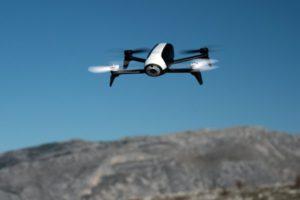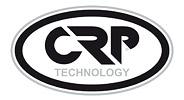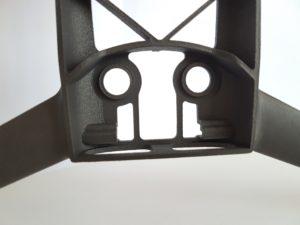CRP Technology, 3D Printing, and Windform Instrumental in the Design of the Parrot Bebop 2 Leisure Drone
 As drones are becoming more common, they’re being built for a variety of purposes; delivery and relief and military operations are just a couple. Then there’s the leisure drone. The name makes it sound like it should be bringing you drinks by the side of the pool – and I’m sure there will be a drone for that eventually – but it is, simply, a drone you use at your leisure, sending it off across the countryside to return with gorgeous film from its journey.
As drones are becoming more common, they’re being built for a variety of purposes; delivery and relief and military operations are just a couple. Then there’s the leisure drone. The name makes it sound like it should be bringing you drinks by the side of the pool – and I’m sure there will be a drone for that eventually – but it is, simply, a drone you use at your leisure, sending it off across the countryside to return with gorgeous film from its journey.
The Parrot Bebop, besides having a great name, is a very leisurely drone – and one that takes amazing photography and video. It’s the latest creation of Parrot, a 22-year-old company known not only for sophisticated drones but for high-tech headphones, smartphone accessories and even smart gardening tools. Drones are their main focus, though, and the Bebop 2 is their latest, launched last year. It’s an ideal drone for beginners, with no learning curve when it comes to piloting, and it’s equipped with plenty of features that make it virtually accident-proof.
 As with many drones currently on the market or in development, the Bebop 2 owes a lot to 3D printing. While the drone’s original structure was created with injected parts, Parrot turned to 3D printing for faster development through a collaboration with CRP Technology. The Italian company’s Windform material is a highly versatile one that has been used in everything from beautifully designed masks to satellite components. It also proved itself to be perfect for prototyping the Bebop 2.
As with many drones currently on the market or in development, the Bebop 2 owes a lot to 3D printing. While the drone’s original structure was created with injected parts, Parrot turned to 3D printing for faster development through a collaboration with CRP Technology. The Italian company’s Windform material is a highly versatile one that has been used in everything from beautifully designed masks to satellite components. It also proved itself to be perfect for prototyping the Bebop 2.
We’ve featured a number of case studies from companies in just about every industry who discovered the benefits of 3D printing in prototyping and manufacturing, and they’ve all said the same thing: switching to additive manufacturing saved them incredible amounts of time and money. Parrot was no exception. Collaborating with CRP Technology allowed them to quickly create prototypes without spending excessive money on more expensive injection tooling, and to move development along at a rapid rate.
Perhaps most importantly, though, Parrot found that CRP’s Windform GT material did an excellent job of mimicking the properties of injected parts. Windform GT, a composite material based on polyamide fiber glass, is lightweight, strong, flexible, and designed for impact resistance, making it the perfect material to prototype and test the Bebop 2’s resilience. It allowed Parrot to work out a lightweight design that would still be resistant to damage – a particular necessity as the Bebop 2 is geared toward beginners, who tend to drop and crash their drones into things quite a bit.
Thanks to CRP Technology, Parrot was able to get the Bebop 2 on the market quickly, and to great success. The drone, in addition to being easy to pilot, features a front-facing camera whose angle can be digitally changed 180° and which delivers clear, distortion-free imagery thanks to the drone’s stabilizing features. It’s a pretty foolproof machine, with automatic homing and emergency shut-down features in case of collisions. It’s on the market now, and if the success of its quick development is any indication, this won’t be the last time Parrot and CRP Technology work together. Discuss further in the Bebop 2 3D Printed Drone forum over at 3DPB.com.
You can check out the Parrot Bebop 2 below:
[Images/Video: supplied to 3DPrint.com from CRP]
Subscribe to Our Email Newsletter
Stay up-to-date on all the latest news from the 3D printing industry and receive information and offers from third party vendors.
You May Also Like
3D Printing Unpeeled: New Arkema Material for HP, Saddle and Macro MEMS
A new Arkema material for MJF is said to reduce costs per part by up to 25% and have an 85% reusability ratio. HP 3D HR PA 12 S has been...
3D Printing News Briefs, January 20, 2024: FDM, LPBF, Underwater 3D Printer, Racing, & More
We’re starting off with a process certification in today’s 3D Printing News Briefs, and then moving on to research about solute trapping, laser powder bed fusion, and then moving on...
3D Printing Webinar and Event Roundup: December 3, 2023
We’ve got plenty of events and webinars coming up for you this week! Quickparts is having a Manufacturing Roadshow, America Makes is holding a Member Town Hall, Stratafest makes two...
Formnext 2023 Day Three: Slam Dunk
I’m high—high on trade show. I’ve met numerous new faces and reconnected with old friends, creating an absolutely wonderful atmosphere. The excitement is palpable over several emerging developments. The high...

































